- Home
- Patrick Robinson
The Shark Mutiny (2001) Page 31
The Shark Mutiny (2001) Read online
Page 31
Two of the security guards, sheltering under the stone table, were hit and killed; the others begged for mercy and were permitted to surrender. And they trooped outside to join their colleagues with their faces to the wall, hands high above their heads, under the scrutiny of the Chinese raiders.
Room by room, the Special Forces took the museum, the staff was taken prisoner, the last tourists ejected from the building and the machine guns placed strategically on front and rear balconies.
At 1445, the sound of helicopters could be heard, out over the surrounding park. The Special Forces commander, in conference with Major Chiang Lee, knew they must be Taiwanese reinforcements, because the signal had not yet been sent back to the beachhead at Chinsan that the museum was secure.
Instantly they ordered all prisoners out onto the steps with instructions to clear the area, and they radioed Bus 213 to open fire at will on the incoming helicopters. Crammed with special police and the remnants of the Army still in the area, the choppers came clattering in over the trees, and immediately flew into a hail of bullets, from the high front balcony and the area to the rear of the bus.
The lead aircraft took the brunt of the heavy fire from the balcony and suddenly exploded, veering over almost in a full somersault and crashing, rotor first, bang into the green tiled roof. The second helicopter was hit from below and its main engine stopped dead, which caused it to drop like a stone from 100 feet, obliterating itself on the stone forecourt and then exploding, killing 15 tourists and injuring 39 others.
The third one banked left across the trees and flew swiftly back to the nearby Army garrison. Meanwhile Major Chiang Lee sent in the signal to the beachhead that the National Palace Museum was safely in Chinese hands for the moment, save for the underground tunnels and vaults, which still contained resisting security forces of an unknown number.
Twenty minutes later, the first of two waves of Chinese airborne battalions came in over the park, the big helicopters and transporters containing two antiaircraft detachments equipped with QW-1 SAMs. This new modified missile with its 35-pound warhead is equipped with a lethal IR homing device accurate to three miles.
The incoming battalion was also equipped with portable antitank weapons and light mortars, and the troops began to jump out into the park, swarming out of the aircraft onto the wet, green grass below, and forming an instant steel ring around the museum. They tied up with the commandos on the Special Forces that had originally taken the museum, and swiftly moved their missile defenses into position.
The museum was not yet completely secure from attack. But it would need a formidable modern force to break through right now. Taiwan had no chance of recapturing the palace, and only a remote shot at destroying it from the air at this point, because its air force was tragically weak and its missile defenses just about spent.
But the treasure trove of the Chinese centuries was firmly under the control of Beijing for the very first time since Chiang Kai-shek’s 14 trains, bearing the very soul of his vast country, had rumbled down to the east coast ferries, almost 60 years previously.
9
0900. Wednesday, May 30.
The White House. Washington, D.C.
News of China’s tightening stranglehold on the island of Taiwan was emerging with leaden slowness. Beijing, unsurprisingly, was releasing nothing. And there had been no time for any of the Western media’s Far Eastern correspondents even to reach Taipei before the iron grip of the Chinese military took hold of the region.
Add to this the complete rupture of all Taiwanese military communications, and the West was left with no sources, no information and no prospects of obtaining any. The only news emerging from the island was the occasional sly and undercover dispatch from the pseudo-embassies, and they had access to very few hard facts. The air battles, which had now been fought over several days, had taken place more than 60 miles from mainland news reporters, out of sight, out of earshot, basically out of reach.
And on this Wednesday morning, the mood in the West Wing of the White House was very somber. The hard men of the United States armed forces, Admiral Arnold Morgan, Defense Secretary Bob MacPherson, the Chief of Naval Operations, Admiral Alan Dixon, and the Chairman of the Joint Chiefs, General Tim Scannell, had been proved powerless to fight two enemies in two separate theaters. They were tied up in the Strait of Hormuz, guarding the world’s main oil routes, and China was effectively left to do whatever it liked.
News was trickling in of a very large Chinese force landing on Chinsan Beach. It was already moving southeast to the port of Keelung. It had taken three days to muster, and the Chinese airborne troops had accepted very heavy casualties as the depleted but still determined Taiwanese forces constantly attacked them on the ground.
Nonetheless, the tide of warriors sweeping across the strait from the mainland, by both air and sea, was just too great, too engulfing for the Taiwanese to stop. Tens of thousands of Chinese troops made the beaches from the vast flotilla of civilian boats, merchant freighters and naval ships. This was a mission that had all of China behind it. And all the efforts of the remaining battalions of Taiwan’s northern army proved unable to break through the “screen” of Chinese marines who fought doggedly to protect their beachhead from attack.
And now they were on the move, and Admiral Dixon considered they would swiftly attempt to capture the port of Keelung. Early reports, telephoned in secret from the pseudo-embassies, had the Chinese growling along the road, marching behind tanks and armored vehicles. But the Admiral offered a ray of hope here, because there was a major Taiwanese defensive force in this area. It had been formed six years previously with the express purpose of holding off a Chinese attack on Keelung, and the invaders would have to fight for every inch of ground in the port city.
It would perhaps come down to attrition, like most of China’s wars. And then there could be only one winner. In Arnold Morgan’s opinion, the Taiwanese would be suing for peace within 10 days.
This was Black Wednesday, no doubt. And at 0915 a White House agent entered the office of the National Security Chief to inform all four men that the Navy helicopter taking them to Andrews Air Base was on the lawn.
From there they were flying up to Cape Cod, landing at the sprawling Otis Air Force Base, and then heading on by Navy helicopter to Marblehead, Massachusetts, 20 miles up the north shore from Boston, for the funeral of Lt. Commander Ray Schaeffer. Admiral Morgan himself had insisted that the SEAL Team Leader be awarded, posthumously, the highest possible decoration in the United States Armed Forces, the Medal of Honor. As a SEAL, Ray Schaeffer’s award was for many, many services rendered to his country. It would be awarded with no public announcement whatsoever.
Three thousand miles away in California, the funeral of U.S. Navy SEAL Charlie Mitchell was also taking place, and it would be attended by Admiral John Bergstrom and the Pacific Fleet C-in-C, Admiral Dick Greening. CINCPACFLT had personally recommended that the rookie combat SEAL quietly be awarded the Navy Cross.
In Marblehead, there was an air of terrible sadness. The Schaeffer family had lived there for generations, and Ray’s wife, Wendy, with their two little boys, Ray, Jr., age nine, and Bobby, six, was returning to live in the old family house down by the water, where Ray’s widowed father now lived alone.
The church was packed, with crowds lining the narrow street outside, and General Scannell read a moving eulogy, regretting that the Lieutenant Commander’s area of operations was classified to such a degree that no one would ever know precisely where he had served, and with what “unfathomable courage” he had carried out his duties. “I hope,” he concluded, “that his Medal of Honor, and the presence here of the senior military figures in America, will offer some testament to the regard in which he was held in the United States Navy.”
Eight Naval officers carried the casket bearing the fallen SEAL to his last resting place, and the church bell tolled out over the little seaport as they lowered the body of Ray Schaeffer into the ground.
&
nbsp; Admiral Arnold Morgan read the final prayer, offering the sentiment that “ordinary people, like ourselves, may sometimes find it difficult to understand what drives a man like Lieutenant Commander Schaeffer forward, to comprehend that selfless gallantry which is bestowed upon so few. I don’t suppose Ray would have been able to explain much, either. And so we will just have to accept that God granted him an inner light, and we now wish him farewell, sure in the knowledge that light will guide him home. Amen.”
At the graveside Wendy Schaeffer was erect and brave with her arm around Ray, Jr. But little Bobby wept uncontrollably for his lost father and Admiral Dixon knelt down to comfort him.
The only good news throughout the day was the formation of a Schaeffer family trust, which was begun with a $100,000 personal donation from the former Chairman of the Joint Chiefs and Boston banking heir, Admiral Scott Dunsmore.
The rest was a catalog of sorrow and remembrance, and the four military chiefs from Washington took their leave as soon as the burial was over. They were back at the White House by 1630, and it quickly became clear that the flight had done nothing to lessen their fury toward the Republic of China.
Back in his office, Admiral Morgan yelled, formally, for Kathy to order them some fresh coffee, with cookies, and answered his telephone as it tinkled.
“Faggot phones,” he muttered, snatching it up and growling, “Morgan. Speak. And I am busy. So make it quick.”
Kathy’s dulcet voice murmured, “Outside desk to home base. Message received about the coffee and cookies. And I have one incoming signal, O rudest of pigs…Admiral George Morris is ready for duty tomorrow.”
“Beautiful,” replied the Admiral, and turning to Tim Scannell, without breaking stride, he snapped, “Fire Borden. Get him the hell out of there. George is coming back.” And then, as if doubting the possibility that his thin, pastel green phone would be man enough to transmit a message, he replaced it and yelled through the door, “KATHY! Make sure that coffee’s HOT!”
General Scannell told the Admiral he would indeed arrange to have Admiral Borden transferred to somewhere more amenable with his talents.
“Christ, Tim,” he rasped. “Don’t do that. We can’t have someone of his seniority driving the harbor launch.”
The General grinned. “I’ll take care of it,” he said. “But to return to our subject, you really do intend us to move forward and either destroy or disable that Chinese Navy base in Burma, and then warn them out of the area?”
“In one, Tim, old buddy. That’s our plan.”
“Timing?”
“I think right now. Give the little bastards something to think about while they’re strangling Taiwan.”
“Is John Bergstrom up to speed on this, Arnie?”
“As far as he can be. He has the charts, but no decent satellite pictures. And he knows we’re moving on it. He has a SEAL team in place in Diego Garcia. And we got the right SSN available with the biggest ASDV we have. Same one we used to get the guys into the refinery.”
“So this meeting now constitutes the finalization of the attack?”
“Guess so, Alan. We have to start somewhere. So let’s get into it—let’s hit these commie bastards hard…one for the Schaeffer, right?”
“One for the Schaeffer it is, Arnie.” General Scannell was not smiling.
Admiral Morgan pulled up a big computerized chart on a wide screen at the end of his office…. “Come on over here, guys,” he said, striding forward. “Let’s take a good look at the position.”
The chart showed the vast delta area between the port of Rangoon and the coastal mouth of the Bassein River, 125 miles to the west. This is the fabulous rice bowl of Burma, interlaced by rivers, streams, canals and tributaries, which irrigate millions of acres of farmland. Through here the mighty 1,350-mile-long Irrawaddy River (today it’s Ayeyarwady) splits and meanders to the ocean, packed with freshwater fish and monsoon waters that originated hundreds of miles to the north toward the Indian and Chinese borders.
It is a sprawling, wet tidal basin, with great promontories of land jutting out between the estuaries of nine rivers, all of which flow into the hot, steamy corner of the Bay of Bengal known as the Gulf of Martaban. The agricultural produce from here feeds much of the nation and much of China, too. The endless paddy fields are interrupted by mango swamps and the occasional monsoon forest, but this land is F-L-A-T.
Admiral Morgan frowned and pointed his ruler at the far left section of the chart. “This last wide stretch of water right here,” he said, “is the Bassein River Delta. It’s the widest of the south-flowing waters in this area, and you’ll see that this island, the long triangle, here, on the left-hand side of the estuary, is called Haing Gyi. You will also notice that the goddamned place sits in about six inches of water, which is a pretty fucking crazy area to build a Navy base on, even if you happen to be a Chinese prick.”
General Scannell came very close to blowing his coffee clean down his nose, so unexpected was Arnold’s swift turn of phrase. But he moved in closer, and observed the wide area of green swamp that stretched all the way along the northern shoreline of Haing Gyi, almost joining it to the Arakan Peninsula.
“Well, we ain’t going in that way,” he said, unnecessarily. “And what about this light blue area that stretches right across the southern approach?”
“Oh, it’s much better in there,” said the Admiral, sardonically. “There is a maximum of nine feet shelving to about nine inches…and on the face of it, gentlemen, we have to assume the Chinese are nuts.”
But his face relaxed, and he continued, “But nuts they ain’t. This is a very strategic corner of the ocean. As we have discussed before, warships from here have the capability of controlling the Malacca Strait. And if I pull up this chart a bit, get us in closer, you’ll see what the little bastards are up to….
“Right here, in this central stretch of the island’s east coast, we got water…. See? More than forty feet right up to the shore…and it stretches out here into what looks like a natural, but narrow, channel, all the way up from the mouth of the estuary, minimum depth forty feet, maximum fifty-five feet.
“However, if you follow it down here…about four miles, the whole damn place goes shallow again…so if you’re trying to get in from the ocean, you got a ten-mile stretch with only twenty feet of water. Which you’d think would be impossible. Right here we got a deepish water throughway into deepish water jetties. But you cannot get a big ship in there.
“But, I know they can…because I happen to have located, on a very poor photograph, a Chinese Kilo-Class submarine, right in there, moored alongside. And that little bastard draws thirty-five feet on the surface, and they didn’t carry the sucker in, did they?”
“Probably not,” replied Admiral Dixon with mock seriousness.
“What they’ve done is dredged a channel, which does not appear on any Navy charts,” said Admiral Morgan. “And what’s more, it isn’t going to appear on any Naval charts, because they’re not about to allow anyone in there. There’s been a major building program by the Chinese on that eastern shore, and they have a very neat little situation—a fully equipped Naval dockyard, right in an area where there are very few other facilities for over-hauling a ship or even refueling. And they got it all to themselves, and they’re going to be an even bigger pain in the ass than usual if we do not, gentlemen, get ’em the fuck out of there ASAP.”
“What do they use for power?” asked the CNO.
“I’m not absolutely certain, but Lieutenant Ramshawe’s on the case. And I appreciate the question. That island is in a remote place, and it’s difficult to see what they are using. But the area is well lit and plainly operational. It’s possible they are using the reactor of a nuclear submarine, but we can’t find it. And the water is not deep enough for it to hide. Ramshawe thinks they have a major power plant, but we can’t yet tell the source. Anyway, when we do, I think we should destroy it…. Gentlemen, we have to get them outta there.”
; “Do you think China has a major single objective in all of this, Arnie?” Bob MacPherson looked pensive.
“I think it’s pure expansion, Bob. For so many years they’ve restricted themselves to their own area of the world, which ought to be big enough for anyone. But they increasingly see themselves as powerful global players. They are envious of us, and see themselves as our equals. They covet our influence, our allies and, above all, our muscle.
“But what they really covet is the world’s oil supplies. Because as China gets rich, it’s going to require more and more fuel. And most of that fuel is in the Middle East and south central Asia. Of course there’s a ton of it in Siberia, but that means negotiating with Russia, which is not about to trade away one of its very few natural resources.
“Which brings us back to the Malacca Strait, the single great throughway of all oil to the Far East. If we allow China to dominate the Malacca, we give them the power to force some tankers right around Indonesia, and that’s going to cost the Japanese a vast amount of money. All their fuel costs will rocket upward, natural gas, propane, jet fuel and gasoline.

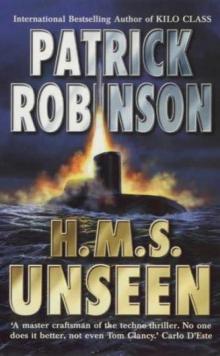 H.M.S. Unseen am-3
H.M.S. Unseen am-3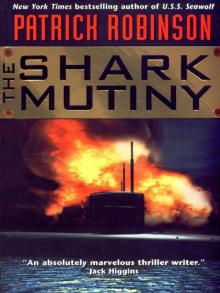 The Shark Mutiny (2001)
The Shark Mutiny (2001)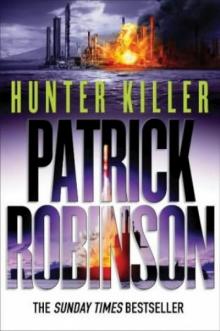 Hunter Killer am-8
Hunter Killer am-8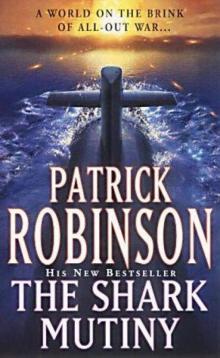 The Shark Mutiny am-5
The Shark Mutiny am-5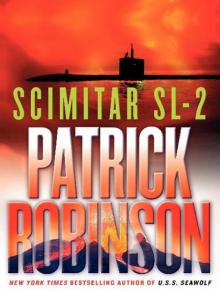 Scimitar SL-2
Scimitar SL-2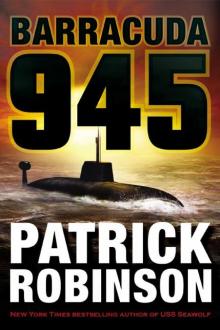 Barracuda 945 am-6
Barracuda 945 am-6 Hunter Killer
Hunter Killer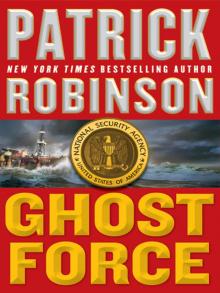 Ghost Force
Ghost Force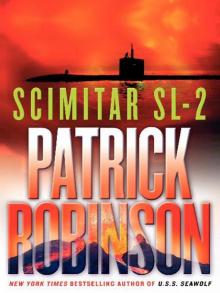 Scimitar SL-2 (2004)
Scimitar SL-2 (2004) Kilo Class am-2
Kilo Class am-2 The Lion of Sabray
The Lion of Sabray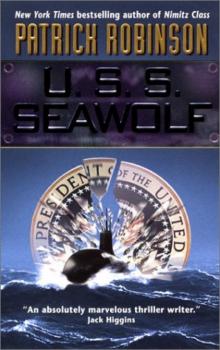 U.S.S. Seawolf am-4
U.S.S. Seawolf am-4 Ghost Force am-9
Ghost Force am-9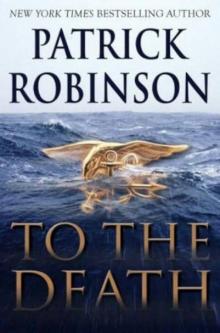 To the Death am-10
To the Death am-10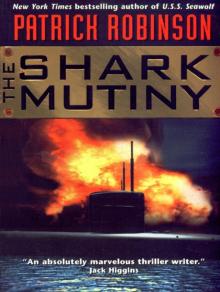 The Shark Mutiny
The Shark Mutiny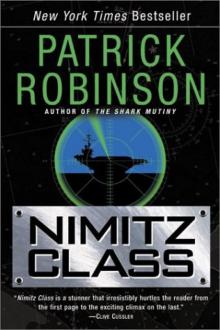 Nimitz Class am-1
Nimitz Class am-1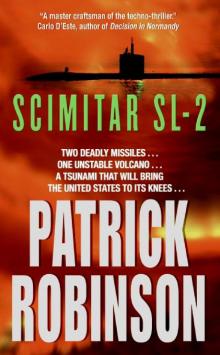 Scimitar SL-2 am-7
Scimitar SL-2 am-7 Barracuda 945
Barracuda 945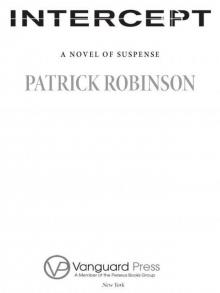 Intercept
Intercept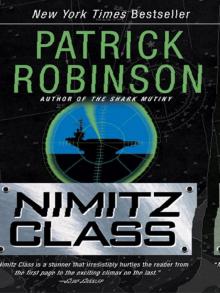 Nimitz Class (1997)
Nimitz Class (1997)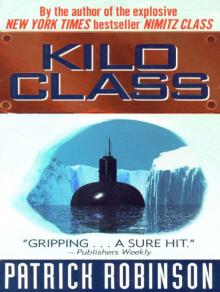 Kilo Class
Kilo Class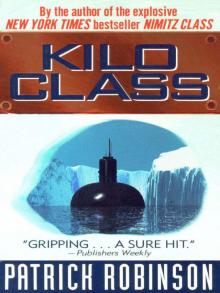 Kilo Class (1998)
Kilo Class (1998) Diamondhead
Diamondhead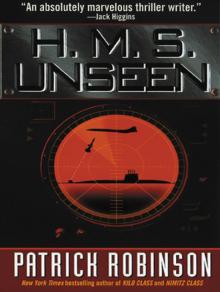 H.M.S. Unseen
H.M.S. Unseen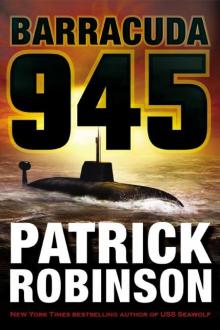 Barracuda 945 (2003)
Barracuda 945 (2003)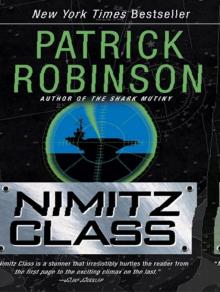 Nimitz Class
Nimitz Class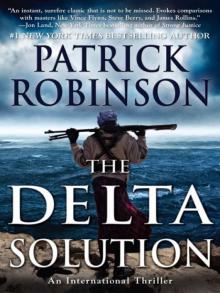 The Delta Solution
The Delta Solution U.S.S. Seawolf
U.S.S. Seawolf